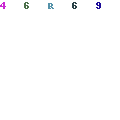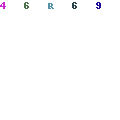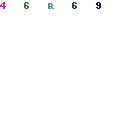Nardi’s ‘monoliths’ represent solar markers
 While there are few pieces of artwork that are meant to be touched, SIUE’s University Museum offers several. On the southwest corner of the Student Fitness center sits a large henge. It may be cold outside yet this winter, but this installation artwork on campus begs for human interaction.
While there are few pieces of artwork that are meant to be touched, SIUE’s University Museum offers several. On the southwest corner of the Student Fitness center sits a large henge. It may be cold outside yet this winter, but this installation artwork on campus begs for human interaction.
The installation is entitled “On the Eclipse” and was created in 1985 by Dann Nardi with funds from the Art-in-Architecture from the Capital Development Board, according to Eric Barnett, director of SIUE’s University Museum. Barnett stated that the Board sets aside 1/2 of 1% of the total expenditure of a major project for art in or around the project. The main art installation for the Vadalabene Center was a piece by Barry Tinsley. According to Barnett, the project ran over budget.
“The project went over budget. There were some changes and any time you change something, it costs. So, we spoke up and said what about 1/2% for the cost overruns. And sure enough, we got it,” said Barnett.
The installation was intended to be occupied by those who look at it, according to Barnett.
“This piece is intended for people to occupy the space with it,” said Barnett.
Barnett stated that the installation represents a modern Stone Henge.
“It’s meant to represent a modern interpretation of henges–like Stone Henge, and out here in Cahokia was famous for having Wood Henge. Those were used as solar markers. So [Nardi] created this with the two monoliths and the spaced out benches to recreate that feeling as those it were created to mark solar events,” said Barnett. “It’s all stimulated by the fact that the 90th meridian runs through campus. So, we are 1/4 of the way around the world from Greenwich, England.”
Although the installation looks like solid stone, Barnett stated they are actually made from cast concrete.
“They really aren’t monoliths. They are cast concrete and he created them using plexiglass forms so that he could control the colorants and dyes that he was putting in with the concrete when it was wet,” said Barnett.
What follows below is the artist’s statement from Dann Nardi’s webpage.
“It seems to me that the one underlying concept which remains consistent within my work is an on-going interest in a “kind of territory that exists between things”. Common materials such as concrete and plywood have served as my medium to structure the work in various scale and context, to elicit architectural references and subtle organic complexities. I feel as if I am continually looking for a sense of order and logic within abstracted, fragmented, geometrical forms of a minimalist nature. How these forms, surfaces, and space connect to larger orders within our world and our experiences, alludes to and suggests feelings of time, spirituality, and relationships between man and nature. Within this territory (this location) is where identities of sculpture, painting, and architecture merge, and qualities that are both unique to each, and shared by all, becomes that which intrigues me, and that which inspires me.”
Filed Under: Art and Design • Faculty News













